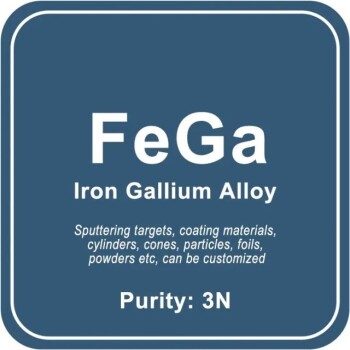Identifying an alloy involves using various analytical methods. One of the most effective and efficient ways is through handheld X-ray fluorescence (XRF) analyzers. These devices can quickly and accurately determine the composition of alloys, including their grade and elemental constituents, without needing sample preparation or transportation to a laboratory. This capability is vital for quality control, material verification, and ensuring that alloys meet specific engineering specifications across multiple industries.
Key Points Explained:

1. Importance of Alloy Composition Analysis:
- Material Performance and Quality Control: Understanding the composition of alloys is crucial for ensuring their performance and quality. Alloys are engineered to combine the strengths of various elements while mitigating their individual weaknesses. This can be adjusted by altering the proportions of these elements.
- Versatility in Applications: Alloys are used in a wide range of industries including industrial manufacturing, construction, automotive, aerospace, and electronics due to their customizable properties such as hardness, strength, and corrosion resistance.
2. Techniques for Alloy Identification:
- Handheld XRF Analyzers: These portable devices enable rapid and non-destructive analysis of alloy composition directly in the field. They can identify metal and alloy grades within seconds and detect multiple elements, making them ideal for on-the-spot quality control and material verification.
- XRF Spectrometry: This method is particularly useful for ferroalloys and other materials where traditional "wet chemistry" methods are labor-intensive and time-consuming. XRF provides high throughput and simplified sample preparation, with advantages like fast analysis speed and wide detection range.
3. Specific Applications and Modes in Alloy Analysis:
- Automotive Industry: Handheld elemental analyzers are crucial for verifying the composition of new lightweight steel grades and aluminum alloys used in automotive manufacturing. These tools ensure that each component meets precise engineering specifications to prevent defects.
- Alloy Comparison Mode: This mode allows for a detailed comparison of the elemental composition of an alloy against a standard or a previously measured sample. It is particularly useful for monitoring impurities and identifying unknown alloy grades.
4. Identification Systems for Alloys:
- 4-Digit Identification System: Alloys are often identified using a 4-digit system where each digit represents a different aspect of the alloy. This system helps in quickly identifying and categorizing alloys based on their specific properties and compositions.
By employing these techniques and understanding the specific identification systems, one can effectively and efficiently identify alloys, ensuring they meet the necessary standards and specifications for their intended applications.
Continue exploring, consult our experts
Discover the precision of KINTEK SOLUTION's advanced alloy analyzers. Empower your quality control with rapid, non-destructive XRF analysis that meets stringent engineering specifications. Enhance efficiency and accuracy in your materials verification process. Don't just analyze – excel. Contact KINTEK SOLUTION today for a transformative partnership in alloy identification technology.



















